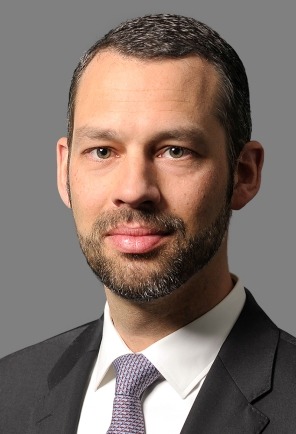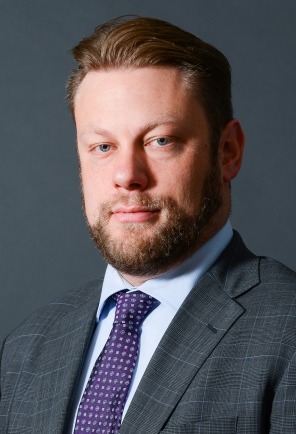Anti-Money Laundering 2025 in Germany
In a recent interview with Financier Worldwide Magazine, Managing Directors Raphael Kiess and Christoph Höerauf explore key trends and developments around Anti-Money Laundering in Germany and provide key considerations and best practices for enhancing compliance programs and internal controls.
To what extent is financial crime growing in frequency and complexity? How would you summarise recent trends in Germany?
Financial crime is a significant issue in Germany, which ranks among the top hotspots for money laundering among Organisation for Economic Co-operation and Development nations. According to data from the Federal Criminal Police Office, organised crime groups have caused billions of euros in damage annually, hitting a 10-year peak in 2023. Alongside a spike in cyber crime, sophisticated cross-border money laundering schemes and financial fraud related to FinTech innovations are also on the rise. Furthermore, the rapidly growing adoption of mobile payments in Germany introduces new risks. This underscores the need for enhanced international cooperation and the use of modern technologies to detect and prosecute such activities. Overall, these developments highlight the importance of continuous adaptation and robust measures to combat financial crime, so as to protect the integrity of the financial system and strengthen public trust.
Could you outline some of the key legal and regulatory developments in Germany affecting anti-money laundering (AML)? To what extent are companies operating under heightened scrutiny and reacting accordingly?
The German government has developed a comprehensive strategy to step up the fight against money laundering and financial crime in Germany. Recently, Germany won the race for Frankfurt am Main to become the seat of the new European multinational Anti-Money Laundering Authority (AMLA). The establishment of AMLA is a crucial step in ramping up actions against money laundering and terrorist financing in Europe. Together with national authorities, AMLA will help ensure uniform application of the legislation in Europe. Another key element of Germany’s strategy is the establishment of a new federal agency, the Federal Office for Combating Financial Crime (BBF). Intended to centralise key competencies to ensure a holistic and networked approach to combatting money laundering, the BBF was supposed to be set up in 2024 and become operational in 2025. However, given recent political developments such as the collapse of the ‘traffic-light’ coalition, it now seems highly unlikely that the BBF will be established in the near future.
How would you describe AML monitoring and enforcement activity in Germany? What problems may arise for multinational companies as a result of the extraterritorial reach of certain laws, and greater collaboration between national agencies?
Multinational firms must navigate varying anti-money laundering (AML) regulations across different countries. The extraterritorial application of laws like the US Foreign Corrupt Practices Act or the UK’s Bribery Act can create complex compliance obligations that differ from German regulations, especially since greater collaboration between national agencies increases the risk of simultaneous or consecutive investigations. Furthermore, enhanced data sharing between agencies can expose multinational firms to risks in multiple countries. With that in mind, fines and penalties may also be compounded and executives and employees may be exposed to civil and criminal liability in foreign jurisdictions. In addition, firms may face increased reporting obligations, including demonstrating adherence to compliance standards, which typically requires investments into compliance and legal departments.
What steps should companies take to ensure adequate processes, programmes and policies are in place to support AML?
The foundation for ensuring an adequate AML programme is adequate knowledge of all applicable AML regulations and legal guidelines. On this basis, a strong AML framework should be established including key elements such as governance, policies and procedures, money laundering risk assessments, internal controls, monitoring, reporting and regular training. To ensure that all these elements are adequate and in line with applicable law, organisations should conduct regular assessments and audits, internally and also externally. Implementation of the three lines of defence model can also greatly aid this goal. It is also essential for organisations to continuously improve their systems, as methods for laundering money are constantly evolving.
In what ways can companies utilise technology to help manage risks arising from AML?
For most firms, the use of technology is already an established means to manage risks arising from AML in areas such as transaction monitoring, customer risk profiling, customer due diligence and adverse media monitoring. Firstly, technology allows for automated and fast screening of the increasingly large data sets that organisations face today. Secondly, technology ensures consistency, thereby reducing potential human error. However, we do see changes in the complexity of control activities performed by technology. While more basic activities were automated in the past, modern developments, particularly around artificial intelligence (AI), allow technology to take over far more complex tasks that were previously reserved for humans due to the experience and judgement required. As an example, one such development is the application of AI for ‘perpetual know your customer’, where customer information is automatically monitored and updated in real-time.
What advice would you offer to organisations on integrating technology into their processes to enhance the efficiency of their AML capabilities and allow them to detect unusual behaviour and identify red flags?
In our experience, firms often underestimate the cost and complexity of integrating technology into their operations, which can lead to harrowing experiences for the organisation that may adversely impact daily operations. With any integration of technology, thorough planning is key. This can include defining objectives or requirements, managing the change and stakeholders, training users and considering wider security implications. Furthermore, it is vital not to trust technology blindly, but to ensure that it functions as intended, both before go-live and periodically thereafter. This can be particularly challenging with AI models, which are often described as ‘black boxes’, as it is difficult to explain how decisions are made. This is also a concern for regulators. AI models may also be biased, potentially leading to inaccurate fraud detection. Another general consideration is that increased reliance on technology can lead to significant risks for the organisation in the case of system failure.
Do you expect the risks posed by money laundering to increase in the months and years ahead? Do companies need to continually improve their systems in order to deal with current and emerging threats?
We expect the risks posed by money laundering and terrorist financing to increase. For one, advances in technology will be adopted by criminals to facilitate financial crime. At the same time, current geopolitical developments increase opportunities for financial crime, due to local conflicts which may also lead to weaker enforcement and increase economic controls and sanctions. Given all of these factors, it will be essential for firms to stay abreast of the latest developments and adapt their systems accordingly, so they can effectively combat financial crime. This is particularly important as criminals often act quickly, so companies must be vigilant to stay one step ahead.
______________________________________
This article was featured in Financier Worldwide: Anti-Money Laundering 2025
https://www.financierworldwide.com/indepth-feature-anti-money-laundering-2025


